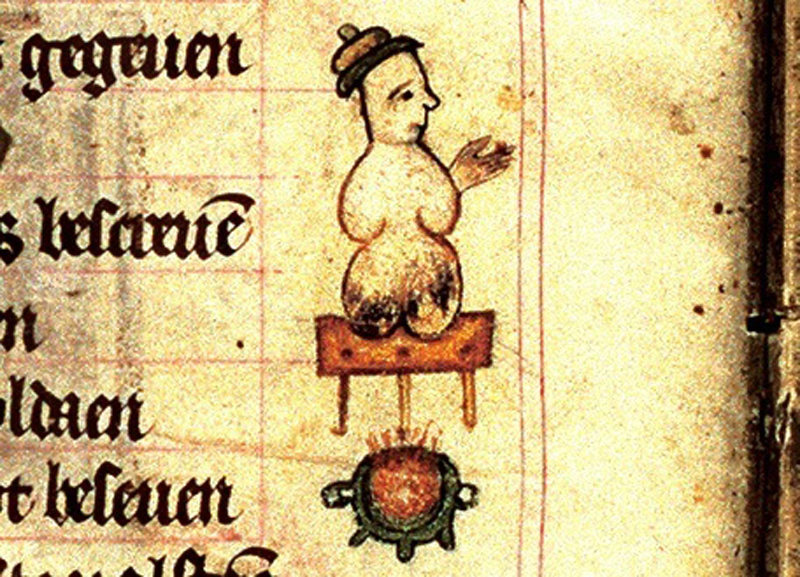Bob Eckstein is the author of a the book The History of the Snowman. In the book, he says that the first documentation of a snowman that he found was in 1380 in an illuminated manuscript, where he also notes building a snowman was a popular form of entertainment in the Middle Ages. The building of snowmen certainly began long before the 14th century. Both children and adults used the free gift of snow to express their ideas each according to their abilities in snow.

Snowman with charred backside in a 14th-century Book of Hours (via Koninklijke Bibliotheek)
Early snowman documentation has been discovered as far back as the Middle Ages, but we must assume that humans, creative beings that they are, have taken advantage of the icy materials that fall from the sky ever since winter and mankind have mutually existed. Bob Eckstein, author of The History of the Snowman, found the snowman’s earliest known depiction in an illuminated manuscript of the Book of Hours from 1380 in the Koninkijke Bibliotheek in The Hague, Netherlands (shown above).
In the Middle Ages, building snowmen was a way for a community to find the silver lining in a horribly oppressive winter rife with starvation, poverty, and other life-threatening conditions. In 1511, the townspeople of Brussels banded together to construct over 100 snowmen in a public art installation known as the Miracle of 1511. This event was uncovered by Eckstein in his The History of the Snowman book. - Winter’s Effigies: The Deviant History of the Snowman

The Snowman Trick (1950), illustration by Luke Limner, Esq. (via Abaculi)
The snowman’s place in the traditional Christmas canon of jolly holiday diversions — along with ice-skating and horse-drawn sleighs — gained a higher status in the early Victorian era, when Prince Albert thrust his penchant for German holiday fun onto England. Santa Claus and the snowman became ubiquitous icons who soared hand-in-hand o’er the land of commodified Christmas kitsch. - Winter’s Effigies: The Deviant History of the Snowman

